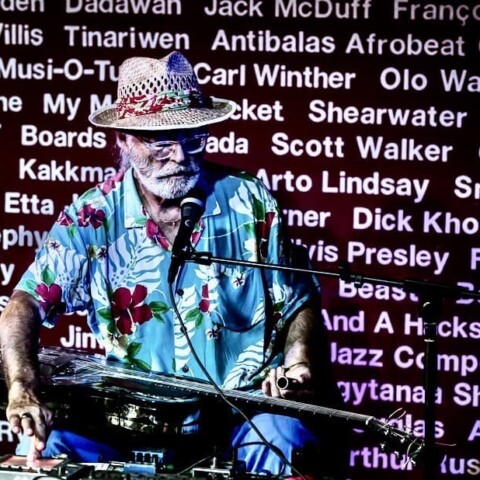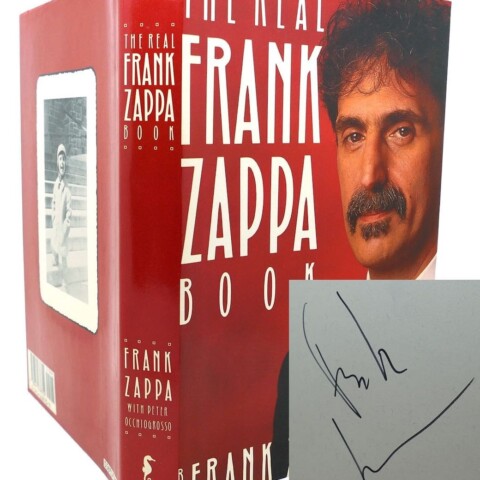 Clinton Dixon reassesses Stevie Wonder’s 1976 album epic.
Clinton Dixon reassesses Stevie Wonder’s 1976 album epic.
I’M A CHILD of the 1980s, and during the early part of that decade New Zealand was awash in the music of Stevie Wonder. Whether it was his radio hits, Grammy award appearances, music videos or even the Billy T James impressions, Stevie Wonder was entrenched in Kiwi pop culture.
Many people are only familiar with Wonder’s music through the endless ‘greatest hits’ collections and compilations that have been released over the years. Just on hits alone, Wonder’s catalogue is extensive and reads like a shopping list of some of the most popular R&B songs ever made.
Personally, I’ve never liked ‘greatest hits’ albums. It just felt like you were getting artistically short-changed, and they come across as an incomplete story, like random chapters taken from an author’s collection of best selling books. So I thought if I was going to put a stop to this audio injustice I had to start tracking down Wonder’s classic ‘70s discography, and what better place to start than his double album tour de force, Songs In The Key Of Life.
Up to the release of SITKOL, Wonder had been riding a huge wave of critical and commercial success with his three previous albums (Talking Book, 1972), (Innervisions, 1973), (Fulfillingness’ First Finale, 1974), making him a very important part of Motown’s roster of recording artists. Golden boy or not, Motown was becoming increasing nervous dealing with the costly delays associated with the scale of the project. Motown executives resorted to wearing t-shirts printed with “We’re almost finished”, highlighting their frustration at having to answer the repeated calls on when the album would be released.
Songs In The Key Of Life was finally released on September 28, 1976 and was rumoured to have cost over a million dollars to make (his last three albums cost $65,000 each). Originally released as a 17 track double album of over 85 minutes in duration, an additional four track seven-inch EP called ‘A Something’s Extra’ was added with the special-edition LP release, helping stretching the album’s running time to an epic 106 minutes. The album was also released as a double cassette, helping to popularise this then-new music format.
 Recorded in Los Angeles, San Francisco and New York, Wonder’s vision and the sheer scale for the album was easily matched by the cattle call of musicians he used to bring his vision to light. An enormous roster of 130 musicians were used during the recording sessions, with Wonder even calling in established recording stars such as Herbie Hancock, George Benson and Minnie Riperton to add something extra to the mix.
Recorded in Los Angeles, San Francisco and New York, Wonder’s vision and the sheer scale for the album was easily matched by the cattle call of musicians he used to bring his vision to light. An enormous roster of 130 musicians were used during the recording sessions, with Wonder even calling in established recording stars such as Herbie Hancock, George Benson and Minnie Riperton to add something extra to the mix.
Superstar producer/engineers Malcolm Cecil and Robert Margouleff (who had been so crucial to Wonder’s synthesiser sound on his previous three albums), had since jumped ship due to a royalty dispute, so Wonder had to look for other ways of creating his signature synth sound. He turned to using Yamaha’s first polyphonic synth, the GX-1, which at a cool $60,000 ($314,000 in today’s money) could play melody parts on three keyboards simultaneously. He even called it his ‘dream machine’. With its complete four-speaker configuration the GX-1 would tip the scales at a staggering 951kgs – a roadies’ nightmare!
My overriding first impressions of the album were of how ambitious a project it was. Double albums can be very self-indulgent affairs. They often allow successful recording artists to go places their producers, for good reason, would never allow them to go. Quality suffers as filler tracks appear, and what could have been a perfectly good single album is now stretched out to become a disappointing double. Thankfully, SITKOL has no filler tracks whatsoever.
The album’s opening track ‘Love’s In Need Of Love Today’ is a slow-burning seven-minute soul ballad featuring Wonder’s trademark impassioned vocals in all their multi-tracked glory. It was such an unusual opening track I initially thought on first listen I had somehow started the album at track six or seven. It gave you a fair hint that Wonder wanted to take the listener on quite a different musical journey.
‘Village Ghetto Land’, a scathing social commentary on slum life in the US, features Wonder’s ‘dream machine’ simulating an orchestra’s string section. Both stunning in its musicality and highly innovative in its use of the prevailing synthesiser technology, I can imagine musicians at the time being in awe of how he could seamlessly blend the two into one cohesive package without one overshadowing the other.
Stylistically, Wonder could not be pigeonholed as an R&B or soul artist, and the song ‘Confusion’ highlights this. A frenetic guitar-driven fusion avalanche of a song, it would never have made the cut on any other R&B or soul album of the time, but the genius of Wonder was that his music was never about genre. His musical gamut was far-reaching, and it took him places many of his contemporaries could not or would not go.
 The album also features the mega hits ‘Sir Duke’, Wonder’s tribute to jazz great Duke Ellington, ‘Isn’t She Lovely’, a song dedicated to the birth of his first child, ‘I Wish’, Wonder’s lighthearted school day reminiscence, and the Latin-flavoured ‘Another Star’.
The album also features the mega hits ‘Sir Duke’, Wonder’s tribute to jazz great Duke Ellington, ‘Isn’t She Lovely’, a song dedicated to the birth of his first child, ‘I Wish’, Wonder’s lighthearted school day reminiscence, and the Latin-flavoured ‘Another Star’.
Wonder has never been noted as a strong lyricist, and though he touches on many of the hot social issues of the day (race, poverty and materialism) I always feel his lyrics play a backseat to his music. It’s so hard to try and grasp or even care for the meaning of his lyrics when you get so easily swept up in the extraordinary musicianship and music. Musical highlights abound on this album from start to finish. Whether its Wonder’s astonishingly emotive vocal control and lyric phrasing, his virtuoso keyboard playing, his clever and original song structures or even his exceptionally tight backing band, there is no lack of ‘wow’ for the playing on this album.
So does SITKOL still hold up nearly 40 years later? There is no doubting the album justifies its iconic status. Unfortunately, thanks to the world of sampling, many musicians have tried reaping from where they have not sown, so the album does feel a little ‘mined’. Hip-hop artists have trolled this album mercilessly over the years, and thanks to the Coolio’s and the Will Smith’s of this world, two of its songs are permanently tainted, leaving an unnecessary blemish on an extraordinary piece of work.
It might sound like nitpicking, but I for one on first listen had a few cringe-worthy moments thinking how bad these modern interpretations were. Thankfully, those thoughts were quickly erased the more the album drew me in, and with every new listen I found something to marvel and to be amazed at, and that in my book is the mark of a great artist with his greatest of work. CLINTON DIXON
















So, what’s the consensus on the quality of the remastered CD versus the original one? Do either do the original vinyl justice? I so love this album. Some of the songs do go on, but weirdly, I want them to do just that!
You nailed it. I thought I was the only guy that didn’t like the way his lyrics are put together.